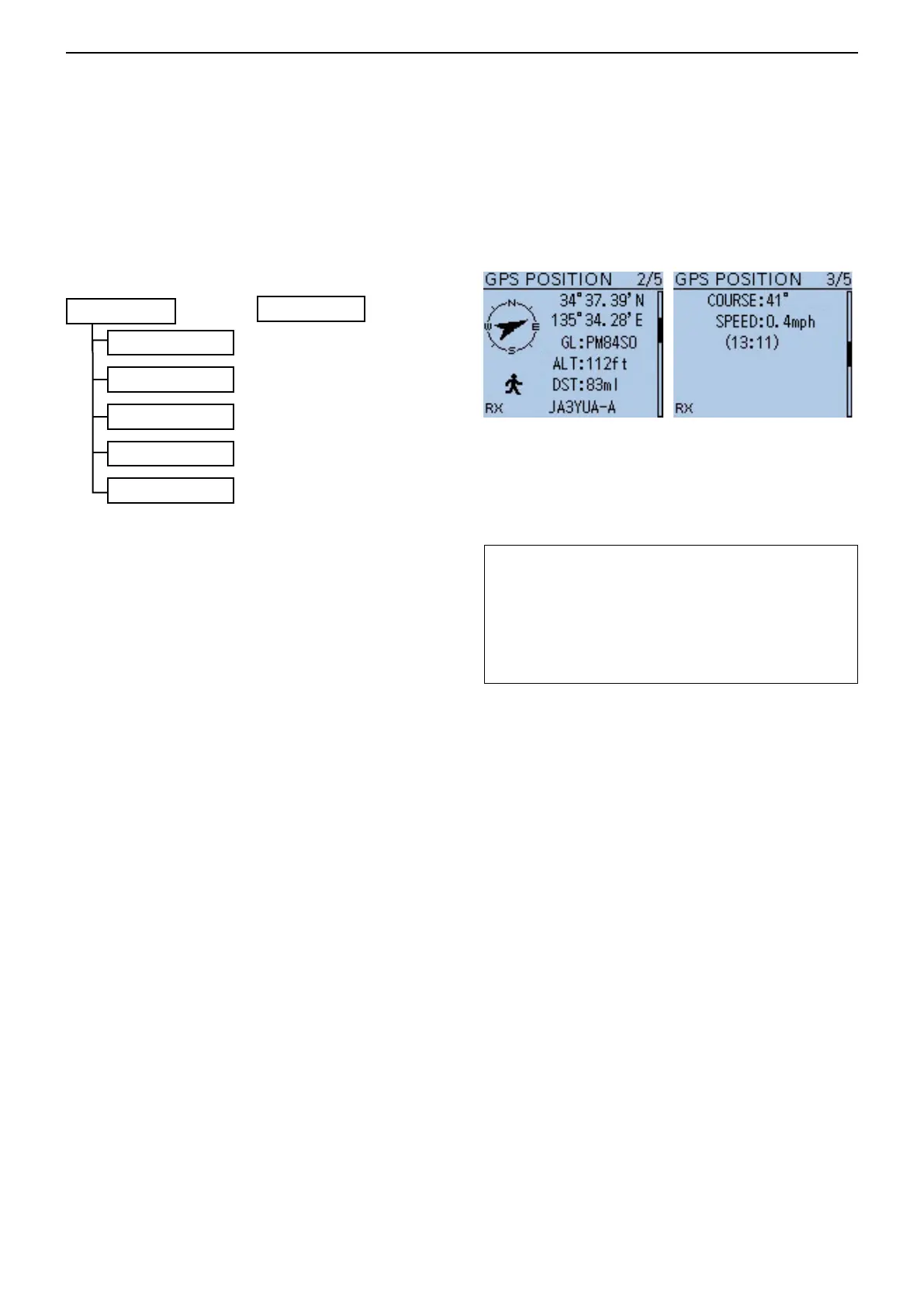10
GPS OPERATION
10-5
■ Checking GPS Position (Continued)
D Caller’s TX format
GPS position data has two transmit modes: D-PRS
and NMEA. Moreover, with the D-PRS mode data, five
types of position format, Position (Mobile station/Base
station), Object, Item and Weather, are selectable.
NMEA (DV-G)
D-PRS (DV-A)
Position (Mobile)
Item
Position (Base)
Object
Weather
• D-PRS: D-PRS is a function which simultaneously
sends position data received from the inter-
nal or external GPS receiver, using the slow
speed data packet space, along with voice.
• Mobile: A station operating while moving.
• Base: A station operating at home or in any build-
ing.
• Object: A station transmitting specific position
data.
An event notice, earthquake information,
satellite track information, and so on, can
be transmitted.
You can add a time stamp data to the object
signal.
• Item: A station transmitting specific position data,
not containing time data.
Position information such as a traffic ac-
cident, lighthouse, antenna or DV access
point location, and so on, can be transmit-
ted.
You cannot add a time stamp to the item
signal.
• Weather: A station transmitting weather information
received from a weather device.
• NMEA: A station transmitting position data
(NMEA0183) received from the internal or
an external GPS receiver.
Example: When the caller’s TX format is D-PRS
Position (Mobile)
For users who have a D-STAR transceiver model
prior to the ID-51A/E:
The GPS TX mode, “GPS (DV-G)” and “GPS-A (DV-
A),” are now called “NMEA” and “D-PRS.”
• GPS (DV-G) NMEA
• GPS-A (DV-A) D-PRS
